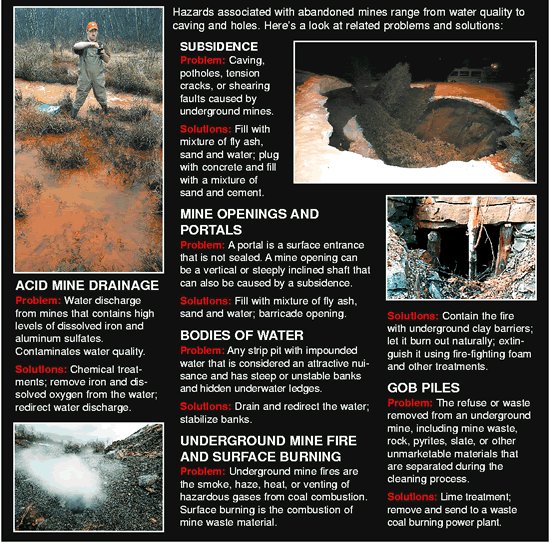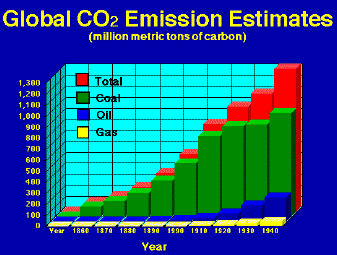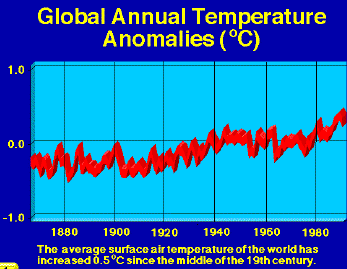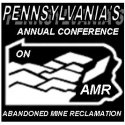
Problems and Solutions Graphic from the 2005 Times Shamrock Newspapers Investigation Series: Deep Trouble by Jessica D. Matthews
Coal has been mined in Pennsylvania since the late 1700s. The impact of this resource extraction is widespread and has many facets. Aside from the global effects of rising greenhouse gases and air pollution caused by fossil fuels, such as coal, Coal Region landscapes have been transformed into virtual wastelands.



‘Moonscapes and Bleeding Streams’
Those who venture too close to open mines take their safety into their own hands. Homes built over abandoned underground mines are at extreme risk of collapsing into the ground. Streams, void of aquatic life, are smothered with a sludge made of heavy metals and coal silt.
Abandoned Mine Lands
- 280,000 acres – 3 times the size of Philadelphia
- Pennsylvania has 1/3 of the national problem across the country
- It will take an estimate of $15 billion to clean it all up
- Impacts ecological balance of the environment – especially water quality
- Many different health and safety hazards
Abandoned Mine Drainage
- Forms when surface water comes in contact with coal material, pyrites, and air
- Contains iron, sulfates, manganese, and/or aluminum
- pH levels sometimes below 3 (very acidic)
- Impacts over 5,000 miles of streams in Pennsylvania
- AMD is Pennsylvania’s largest non-point source water pollutant
Highwalls & Water-filled Pits
- Highwalls are cliff-like banks at strip mines
- Can be hundreds of feet high
- Deaths and injuries from falling
- Water-filled pits are found at the base of highwalls
- Sometimes popular recreation spots
- Drownings occur
Subsidence
- Moving, shifting, cracking, or sinking of the earth
- Wooden support structures or pillars in underground mines decay and collapse
- Changes in mine pool levels can be another cause
- Buildings are also affected by subsidence
- Water supplies and other utilities may be affected or damaged
Open shafts
- Surface openings to underground mines
- May be camouflaged by overgrown brush or covered in ice
- Can be hundreds of feet deep
- Usually contain water
- Falls, entrapment, and drownings can occur
- Often leak mine gases into nearby areas
Refuse Piles
- Material left over after coal mining and processing
- Contain coal and rock
- Runoff from piles causes surface mine drainage
- One pile can cover many acres
- Some piles take on the formation of a mountain range
- Destroy natural landscape and create wastelands
- Black material soaks up heat and radiates it back into the atmosphere
Mine Fires
- Refuse piles or exposed coal seams catch fire
- Garbage or brush is dumped in these abandoned areas illegally and set on fire
- Pennsylvania has 40-50 deep mine fires burning statewide at any given time
- The oldest mine fire started in 1912 and is still burning today near Wilkes-Barre
- Dangerous gases are released and can seep into homes (i.e. carbon monoxide)
- Ground subsidence once underground mine pillars burn
Old Equipment & Structures
- Abandoned mine equipment and processing buildings
- Buildings are often deteriorated and unstable
- Can contain asbestos and other contaminants
- Attract curious trespassers and illegally dumped trash












You must be logged in to post a comment.